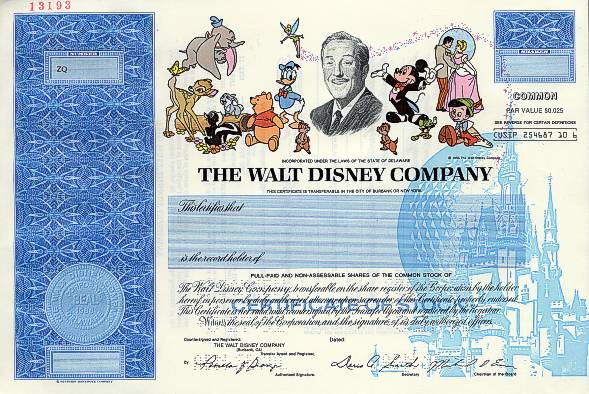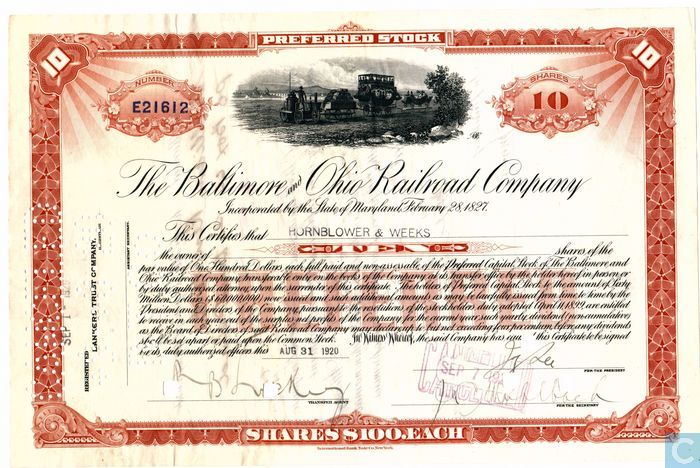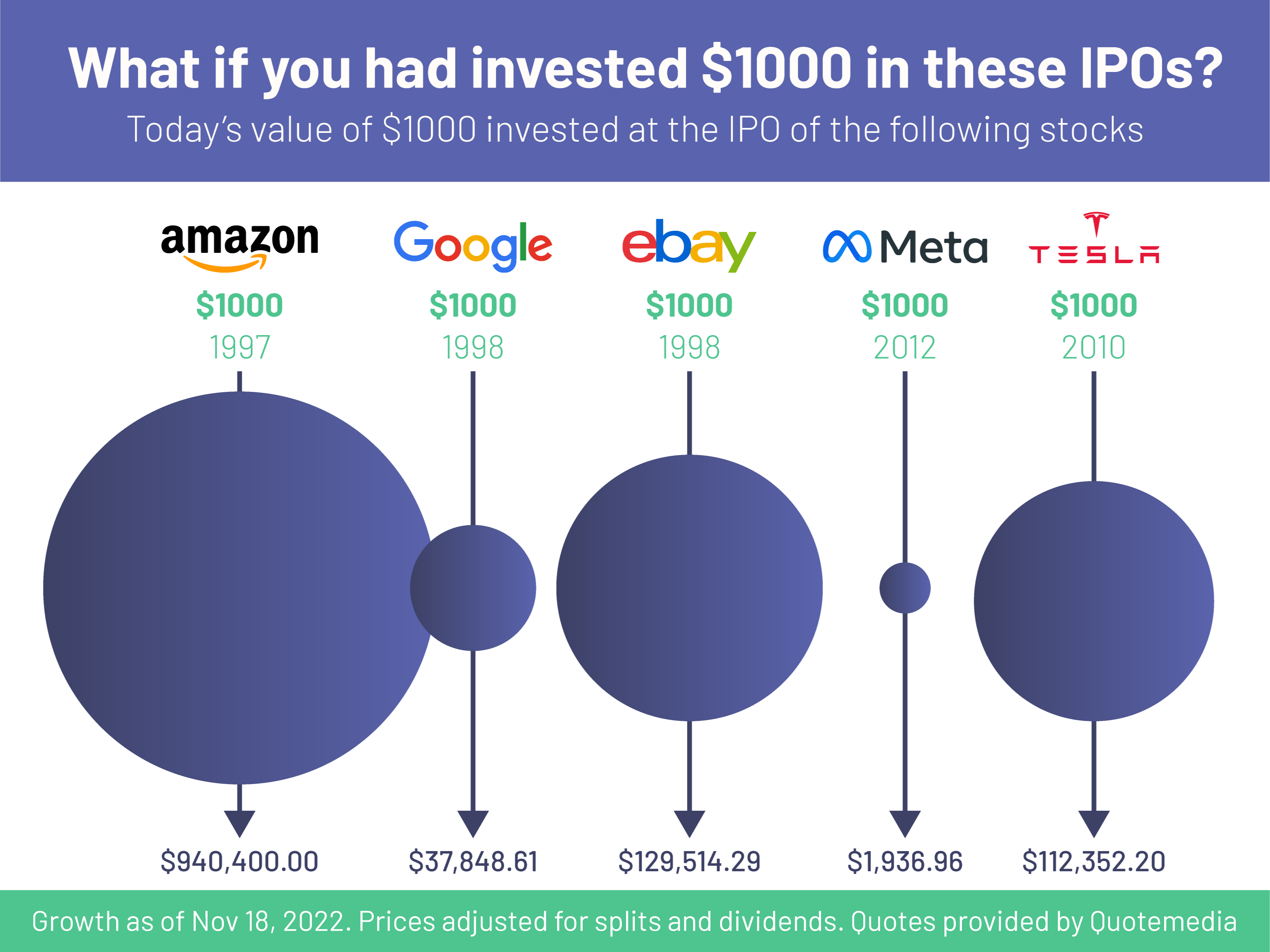What is a Stock?
A stock is defined as a share of ownership in a company. If you own a company’s stock, you own a percentage of the company itself. This includes partial ownership of its assets, (like equipment, vehicles, and buildings) and partial ownership in its income and profits. The main reason why people purchase stocks is because they believe in a company and its current success. And they want to be part of the company’s future success, with the hope of sharing in their profits.
Large companies issue stocks or shares as a means to prove and track who owns a piece (or share) in the value of the company. In the past, if you bought 100 shares of a company, you might get a stock certificate like the one pictured below indicating your ownership. When you decided to sell your shares, you would notify your broker of your intent to sell. You would send your certificate to the broker, and he would try to sell them to another investor who might be interesting in buying at a price you both agree on. In today’s technology-driven market, companies are more likely to issue electronic or digital shares. Electronic shares are easy to trade because brokers don’t need to wait to receive any documentation. This process of buying and selling is the essence of the stock market. It’s where investors can invest in new companies, or trade shares when they agree on a fair price.

What Does Owning Stock Get Me?
Let’s look at an example to help you understand how stock ownership might work for you. If a company issued 1,000 shares and you owned 100 of them, you would own 10% of the company. That doesn’t mean you can go to their head office and take 10% of the furniture. It means that if the company made $100,000 in profit one year, and decided to pay it out to their shareholders, you would get $10,000. However, if the company was not profitable and decided to close, they might only get $1,000 after selling all their assets. Leaving you with only $100.
As an investor in the stock market, you will get a much smaller percentage of a complete company. Take Apple, for example.
Apple has approximately 15.5 billion shares outstanding, so if you owned 100 shares of Apple, you would own a fraction of a percent. That seems like a tiny amount, but keep in mind that Apple makes $50 billion/year. So, if they paid out all of their earnings one year, you would get $896!
If you decide that you no longer want to own your Apple shares, you can always sell your shares on one of the stock exchanges.
Types Of Stock
There are two different kinds of stocks that companies can sell. While almost all stocks traded on stock exchanges are common stock, some companies have issued preferred stock as well.
Common Stock
Common stock is the kind most investors buy. Common stock generally gives one vote at shareholder meetings for every share owned.
Common stock holders may also be entitled to receive dividend payments, which is a percentage of the redistribution of profits. For larger, more stable companies, a portion of corporate profits is usually paid back to shareholders 4 times a year as a dividend. Companies that are still growing usually pay no or very little dividends; while more established companies, like utility companies, often pay higher dividends.
Preferred Stock
Preferred stocks generally do not have voting rights, and nor are they commonly traded on any exchanges.
However, preferred stocks do have the benefit of receiving dividend payments first, if a company decides to pay them. Preferred stockholders may also receive a larger portion, and be paid before common stockholders. Preferred stockholders are also entitled to be paid first if a company goes bankrupt and all the assets are sold off.

The Difference Between Stocks and Bonds
When you buy a bond, you’re buying an “I owe you” or loan from the company or treasury. A bond is a promise that a company makes to pay you back for the amount you lent them, plus interest. Therefore, if you own a bond, you’re only lending a company money. When you shares in a company, you own part of the company itself.
Where Do Stocks Come From?
Shares in a company come from two places: new issues or stock dividends (or splits).
New Issues (Initial Public Offering)
A new issue of stock is when a private company decides to go public, and issues shares of stock for anyone to buy. This is often called an initial public offering, or an IPO. When a large private company goes public, it can be a very exciting event on the stock market. With huge fluctuations in the stock’s price in the first few weeks as a fair price for the shares is revealed.

Private companies choose to go public primarily to raise money. The original owners, or investors, will sell part of their ownership in the company. Allowing shareholders to vote on some management decisions, in exchange for the cash raised to reinvest in the company to help it grow.
Stock Dividends (Splits)
Companies may also issue new shares after the IPO. This can be done by giving all current shareholders additional shares in proportion to how many shares they currently have. For example, they might announce that for every 10 shares you own now, they will issue one extra share.
This would be a 10% stock dividend, and the market price for the stocks would normally drop by 10% even though all shareholders will still have the same value, (or percentage) as before.
If the stock dividend is large enough, usually about 20%, this will instead be called a stock split. There are many reasons why companies would want to have a stock dividend or split, but they usually happen for one of two reasons:
Attract Attention and Increase Trading
Companies may split their stock to attract attention to the company through the hype of making this announcement. However, the simple act of there being more shares in circulation may encourage people to buy and sell more, since each individual share takes up a smaller percentage of a portfolio.
Lower The Price
Some large companies like to have their stock price stay in a certain range. One reason for this is that the more expensive a stock, the fewer people there are who can afford to buy it (or buy an additional share). So, splitting stocks can help it become more affordable, and increase the total value of all stocks in the long run.
A Short History Of Stocks
Stocks trace their origins back to the Roman Empire, where large, private companies that carried out some public duties, would sell shares to Roman citizens to raise cash and grow their business.
Over the centuries, joint-stock corporations were often chartered by kings for large projects that they didn’t want to finance themselves. For example, many canals and railroads were built by joint-stock corporations; where private investors were willing to take the risk that a project might fail, in exchange for some of the profits if it succeeded.
During the Age of Exploration, joint-stock corporations funded explorers to voyage across oceans, and later ship goods across continents. The British East India Company is perhaps the most famous of these, which was involved in everything from the exploration of Canada and the Americas, to the British conquest of India.
Stocks and Risk
Investing in stocks is risky. There’s no guarantee that a company will be successful. Companies strive to be profitable, but they also face unexpected events which can impact their bottom line and impact investor confidence. So, when you decide to purchase stock, be prepared for some ups and downs.